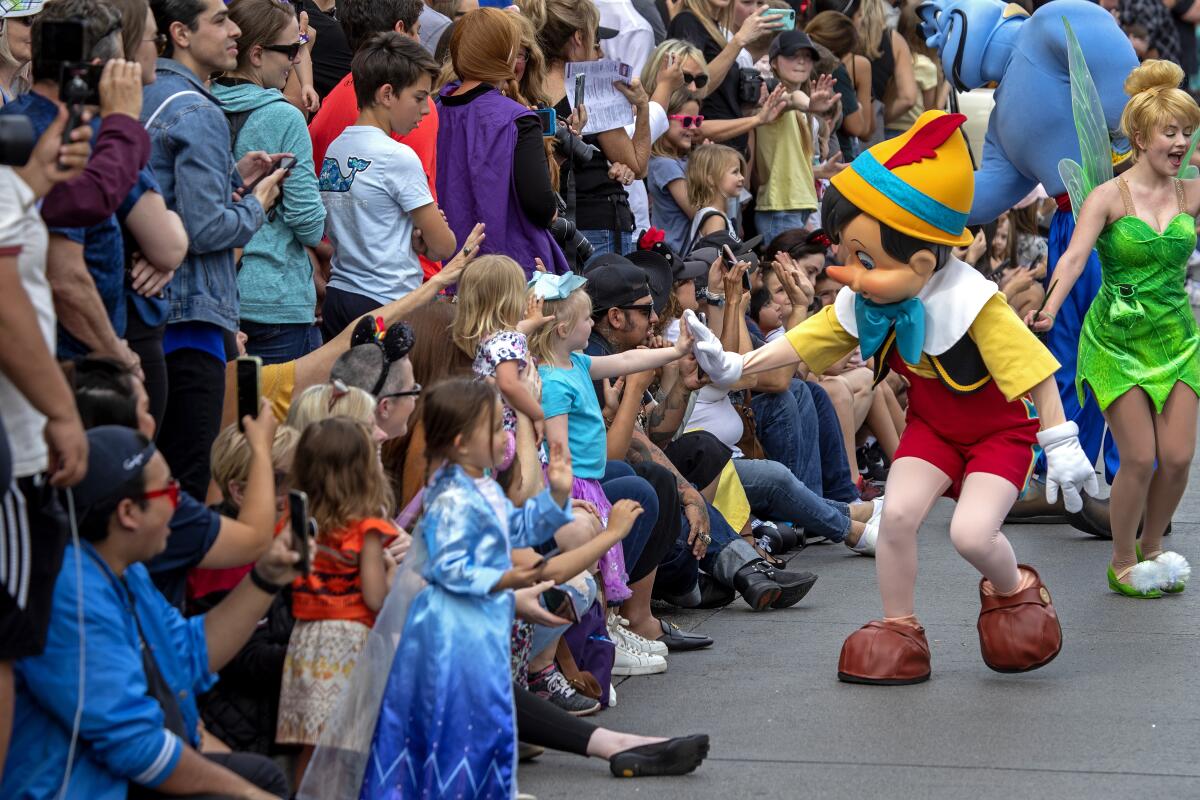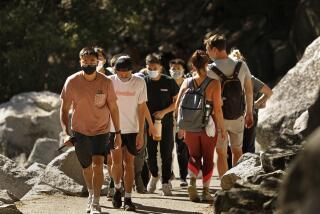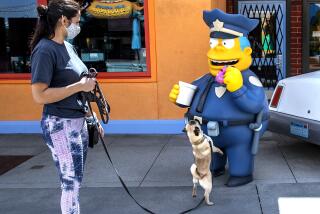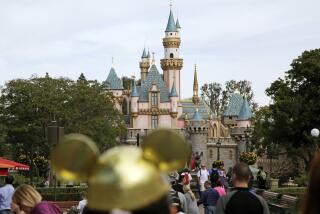California theme parks won’t profit at 15% capacity. Here’s why they’ll reopen anyway

- Share via
An overhaul of California’s COVID-19 safety regulations announced Friday could allow Disneyland, Universal Studios, Six Flags Magic Mountain and other theme parks to reopen their outdoor rides and attractions as soon as April 1 if they’re in counties where coronavirus transmission is low enough.
Another caveat: In most of the state, parks will have to keep attendance at 15% of capacity — a rate so low that industry experts say the parks would certainly not clear a profit.
Still, they say, parks are likely to embrace that money-losing mode for a while because they’ll need time to ramp up operations.
“Fifteen percent is not sustainable as an operating level,” said John Gerner, a theme park expert and managing director of Leisure Business Advisors. “But as a transition toward fully opening ... it makes sense.”
Under the new rules announced Friday, amusement parks will be allowed to reopen as soon as April 1 with 15% capacity in counties that are in the red tier — the second-strictest of California’s four-tier reopening roadmap. A county is placed into one of four tiers based on its number of new COVID-19 cases per 100,000 people, rate of positive coronavirus tests and an equity measure.
Under the new regulations, the attendance cap rises to 25% of capacity once a county progresses to the third-strictest tier, orange, and 35% upon reaching the most lenient tier, yellow. The previous rules forbade parks from reopening until their home county reached the yellow tier and capped attendance at 25% capacity.
In November, Santa Cruz Beach and Boardwalk became the first theme park in the state to reopen under the previous rules, but it closed after one weekend when COVID-19 cases climbed again in Santa Cruz County.
Los Angeles County (home to Magic Mountain and Universal Studios Hollywood) and Orange County (home to the Disney parks and Knott’s Berry Farm) remain in the most restrictive tier, purple, but they appear close to entering the red tier.
Theme park operators praised the state’s rule change, saying the nearly yearlong closure has been a brutal financial hit to the parks, their workers, nearby businesses and the cities that rely on the tax revenue generated by the parks.
Since the parks closed last year, most have furloughed or laid off many of their workers. The Disneyland Resort in Anaheim let go about 10,000 of its nearly 31,000 employees after its Disneyland and Disney California Adventure parks closed. More than 1,000 have been rehired to help staff a food and shopping event scheduled to start March 18.
Gerner and other experts say the theme parks will need time to rehire and retrain workers before they reopen. Starting with crowds that are only 15% of full capacity will make the transition easier, they said.
Many of the workers who were let go have landed other jobs, so theme parks will need to hire and train people who have never operated an attraction or served food in that setting, the experts say.
“Everyone is rusty,” said Martin Lewison, a business administration professor and theme park expert at Farmingdale State College in New York. “They have to knock the rust off of things.”
Lewison agreed that most theme parks will not make a profit operating at 15% capacity, but he said any revenue is better than none. Plus, he noted that the parks continue to incur costs — taxes, utility bills and maintenance — even when they are closed.
Disneyland insiders say the100-acre park has a capacity of about 80,000 people per day. The state’s new regulations would allow about 12,000 visitors per day once Orange County reaches the red tier.
A question is whether theme park fans will rush to the parks when the gates open or be hesitant, fearing the risk of catching COVID-19 while riding Disneyland’s Matterhorn Bobsleds or Universal Studios Hollywood’s tram tour.
“I think a lot of people are going to think twice,” Gerner said.
Ryan Temple, a Disney fan from Phoenix who visited Disneyland a couple of times a month before the pandemic, said he has missed the park and often reminisces by looking at pictures from his past visits.
Still, he said, he probably won’t be there the day the park reopens.
“Even though it would be at 15% capacity, that would still be a sudden shock to be around that many people again,” he said, adding that he may wait until he gets vaccinated against COVID-19.
“I’m hoping that comes sooner rather than later,” Temple said.
More to Read
Inside the business of entertainment
The Wide Shot brings you news, analysis and insights on everything from streaming wars to production — and what it all means for the future.
You may occasionally receive promotional content from the Los Angeles Times.











